MSV Curator of Collections Nick Powers looks at Storer College’s 150-year-old history through several objects gifted to the MSV by descendants of the College’s founders: Nathan Cook Brackett (1836-1910) and his wife Louise Wood Brackett (1842-1936).
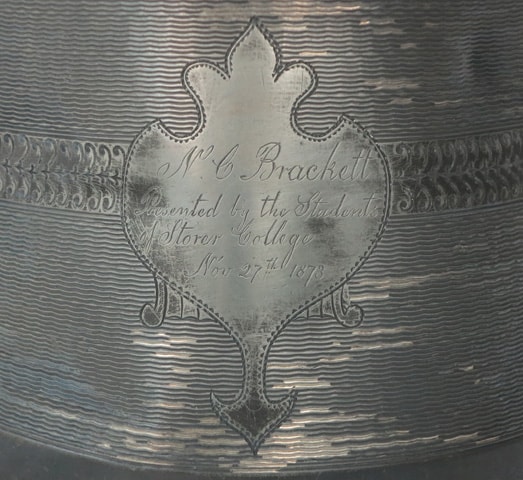
by Curator of Collections Nick Powers
October marks the 150th anniversary of the opening of Storer College in Harpers Ferry, West Virginia. From its humble beginnings following the Civil War as a school for formerly enslaved people, for nearly a century Storer served as a center for African American education in the Shenandoah Valley and the South.[i]
The Harpers Ferry National Historical Park—which encompasses the former Storer campus—has already begun a year-long celebration of the College. Make sure to check out their website as the year progresses for programs relating to this anniversary milestone. But for our part, I thought we might look at Storer’s history through several objects gifted to the MSV by descendants of the College’s founders: Nathan Cook Brackett (1836-1910) and his wife Louise Wood Brackett (1842-1936).
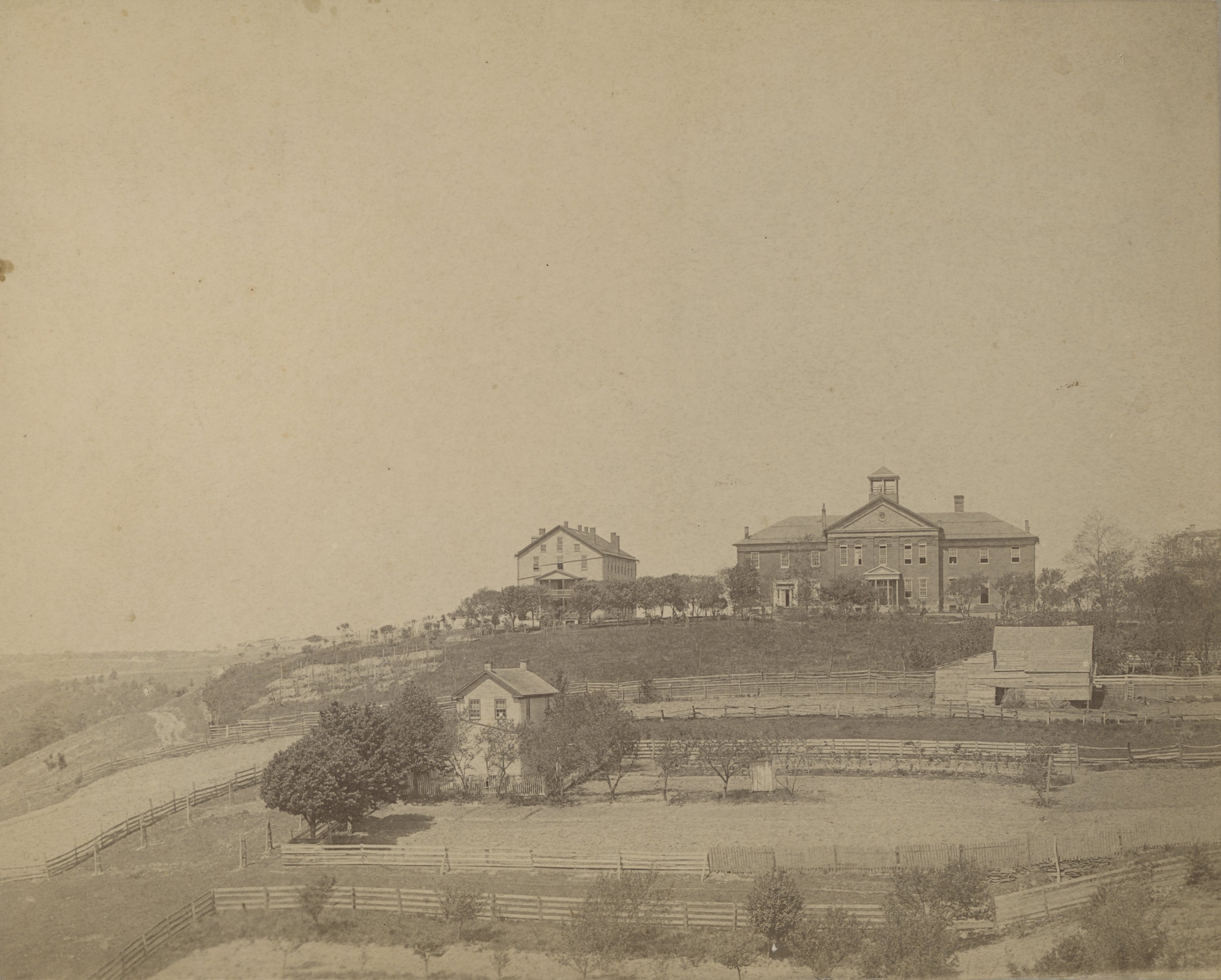
Fig 1. The Storer College campus in 1890. Anthony Memorial Hall is the large building at right. Collection of the Museum of the Shenandoah Valley, 2009.0010.9, gift of Mrs. Anne Dungan, Mr. John C. Newcomer, Mr. Thomas W. Newcomer, and Mrs. Elizabeth Snyder.
This blog will be posted in two entries: the first entry will explore the origins of the College in the wake of the Civil War. The second entry will look at the activities of Storer College until its closing in 1955.
The story of Storer College begins towards the end of the Civil War during Union General Philip Sheridan’s Burning of the Shenandoah Valley in 1864. As Sheridan’s army tore its way up the Valley, in its wake followed a twenty-year-old Freewill Baptist Church minister named Nathan Cook Brackett.
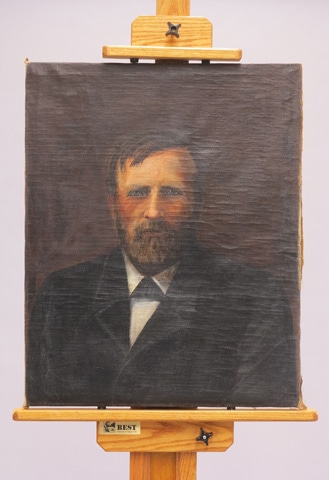
Fig 2. Portrait of Rev. Nathan Cook Brackett (1836-1910) attributed to Louise Wood Brackett (American, 1842-1936), Harpers Ferry, WV, about 1890. Oil on canvas. Collection of the Museum of the Shenandoah Valley, 2009.0010.5, gift of Mrs. Anne Dungan, Mr. John C. Newcomer, Mr. Thomas W. Newcomer, and Mrs. Elizabeth Snyder. Photo by Nick Powers.
Brackett was born in 1836 in Phillips, Maine. He trained as a minister, first at the state seminary and later at Dartmouth College. After graduating from Dartmouth in 1864, Brackett joined the war effort as an agent for the United States Christian Commission in the Shenandoah Valley. The Commission formed at the beginning of the war to provide supplies and counseling to Union soldiers. But as the war stretched on, Commission agents found themselves aiding people on both sides of the conflict, including those who had been enslaved.
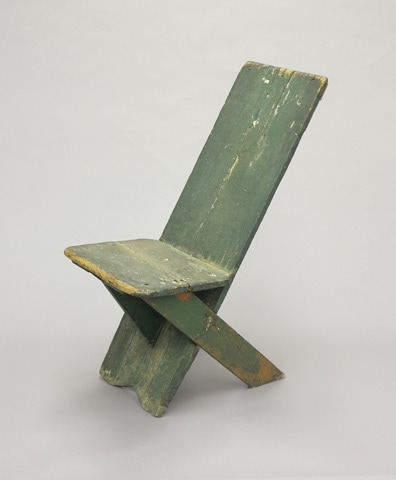
Fig 3. Camp chair used by Rev. Nathan Cook Brackett (1836-1910) during the Civil War, maker unknown, 1861-1865. Painted pine. Collection of the Museum of the Shenandoah Valley, 2009.0010.4, gift of Mrs. Anne Dungan, Mr. John C. Newcomer, Mr. Thomas W. Newcomer, and Mrs. Elizabeth Snyder. Photo by Nick Powers.
Less than a year later after Brackett arrived in the Valley, the war ended and the U.S. Christian Commission dissolved. Its task was deemed completed. But approximately 30,000 people who had formerly been enslaved in the Shenandoah Valley (including about 700 slaves located in the Harpers Ferry area alone) were left to search for opportunities previously unavailable to them, like education. A void was left open that needed to be filled.
Shortly after the war, Brackett returned to New England to finish his studies, but church leaders soon convinced him to return to the Shenandoah Valley with the mission of educating the newly-freed population there. Brackett quickly agreed and returned to the Valley in late 1865. Accompanying him was his new wife Louise Wood Brackett, herself an educator.
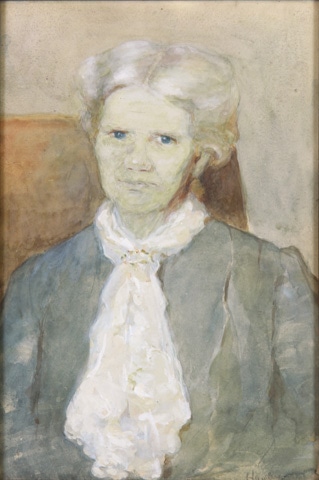
Fig 4. Portrait of Louise Wood Brackett (1842-1936) by Margaret Foote Hawley (American, 1800-1963), Harpers Ferry, WV or Washington, D.C., about 1890. Watercolor on paper. Collection of the Museum of the Shenandoah Valley, 2009.0010.6, gift of Mrs. Anne Dungan, Mr. John C. Newcomer, Mr. Thomas W. Newcomer, and Mrs. Elizabeth Snyder. Photo by Rick Foster.
Brackett did not operate only as a representative of the Freewill Baptist Church. Other social-benefit organizations formed during the war, like the American Missionary Association and the U.S. Freedmen’s Bureau, also backed his efforts. While we will be focusing primarily on the events at Storer College and in the Shenandoah Valley, it is important to note that these organizations supported similar endeavors across the South during Reconstruction.
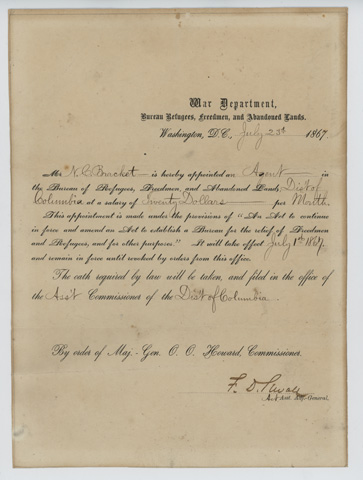
Fig 5. Nathan Cook Brackett’s July 1867 commission from the Freedmen’s Bureau in Washington, D.C. Collection of the Museum of the Shenandoah Valley, 2009.0010.9, gift of Mrs. Anne Dungan, Mr. John C. Newcomer, Mr. Thomas W. Newcomer, and Mrs. Elizabeth Snyder.
The Bracketts’ first attempts at establishing a school were soon realized in the buildings of the former U.S. Armory at Camp Hill above the town of Harpers Ferry. The Armory had been destroyed when the war began and sat virtually vacant. The Federal government allowed the Bracketts to live and teach in Lockwood House on Camp Hill free of charge.
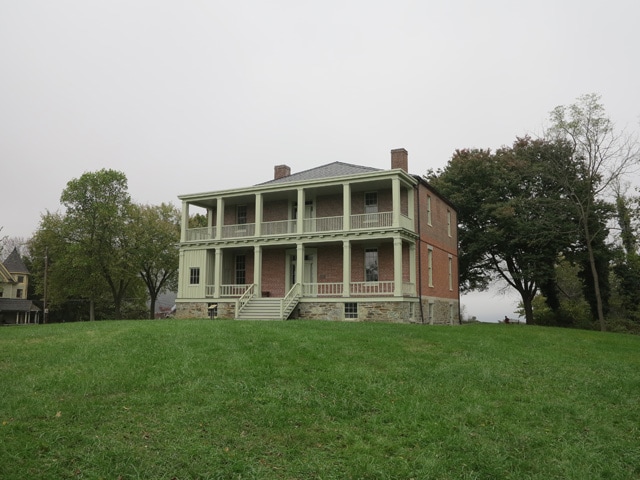
Fig 6. Lockwood House as it appears today. Photo by Nick Powers.
Harpers Ferry was a natural choice for the new school. As the funnel of the Shenandoah Valley where the Shenandoah and Potomac Rivers meet, it was the point through which many formerly enslaved people travelled to move north or west. For the next two years, Lockwood House served as the base of operations for not only the Harpers Ferry school, but satellite day and night schools that Nathan Brackett helped establish across the Valley in places like Berryville, Winchester, Front Royal, Woodstock, Harrisonburg, Staunton, and Lexington.
Despite such early successes, Storer’s first/inaugural days were not easy. The people of Harpers Ferry initially did not welcome the Bracketts or their mission. Teachers and students alike faced libel in local newspapers and harassment and even stoning in the town’s streets. Among the most impacted were the young, white female teachers from New England who travelled the circuit of day and night schools. These women worked one-on-one with their students—including black men—violating Southern taboos that had existed since before the Civil War.
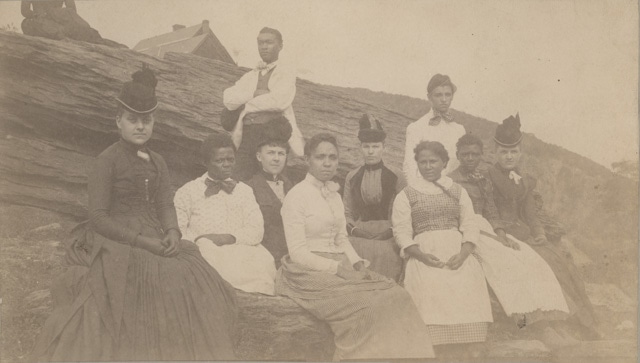
Fig 7. Students and teachers of Storer College, possibly photographed at Jefferson Rock in Harpers Ferry, 1890. Collection of the Museum of the Shenandoah Valley, 2009.0010.9, gift of Mrs. Anne Dungan, Mr. John C. Newcomer, Mr. Thomas W. Newcomer, and Mrs. Elizabeth Snyder.
Despite the hardships, the efforts of the Bracketts and their teachers and students did not go unnoticed by the Freewill Baptist Church elders in New England. The church began to search for a donor who could help elevate the Harpers Ferry experiment into something greater.
Church leadership found their answer in Maine businessman and philanthropist John Storer (b. 1796). Storer was aware of the Bracketts’ efforts in the Valley and wanted to share his wealth to help the Reconstruction effort. Storer challenged the Freewill Baptist elders to match a $10,000 donation, with the stipulation that the new school be open to anyone regardless of sex, race, or religion. The church leadership matched John Storer’s funds in record time, and Storer College was officially born on October 2, 1867.
With the school growing exponentially, a need developed for more space and buildings. In 1868, Congress passed a bill that transferred ownership of Lockwood House and several other buildings on Camp Hill to the College. These events transformed Storer College from a small school to an institution of higher learning in a very short time.

Fig 8. Myrtle (later Mosher) Hall, the men’s dormitory and one of the many buildings included in Storer College’s expansion, about 1878-1879. Collection of the Museum of the Shenandoah Valley, 2009.0010.9, gift of Mrs. Anne Dungan, Mr. John C. Newcomer, Mr. Thomas W. Newcomer, and Mrs. Elizabeth Snyder.
Perhaps the most meaningful object in the MSV Collection from this early period in Storer’s history is an ice water pitcher presented to Nathan Brackett, currently on loan to the Jefferson County Museum in Charles Town, West Virginia. The pitcher might look like a large tankard, but it functioned more like an early thermos. A wooden lining between two layers of metal helped insulate and keep water ice cold. At the height of their popularity from the 1850s until about 1900s, ice water pitchers were often given as presentation pieces.
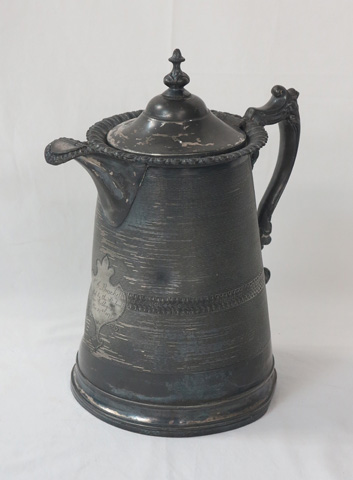
Fig 9. Ice Water Pitcher possibly by Meriden Britannia Company, Meriden, CT, 1873. Silver plate, possibly Britannia metal. Collection of the Museum of the Shenandoah Valley, 2009.0010.1, gift of Mrs. Anne Dungan, Mr. John C. Newcomer, Mr. Thomas W. Newcomer, and Mrs. Elizabeth Snyder. Photo by Nick Powers.
This ice water pitcher bears an inscription from the students of the College—including many formerly enslaved people—to Nathan Brackett not long after the sixth anniversary of Storer’s founding. It reads: “N. C. Brackett / Presented by the Students / of Storer College / Nov 27th 1873”. This short inscription illuminates the stage that had been set for African American education in West Virginia and the Valley by the end of Reconstruction in 1877.
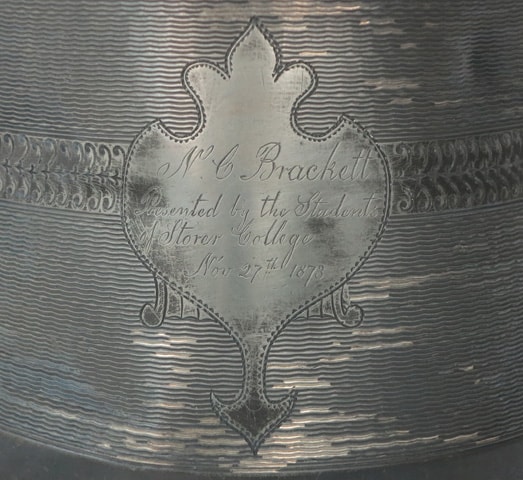
Fig 10. Detail of the inscription on the pitcher illustrated in Figure 9. Photo by Nick Powers.
Stay tuned for Part 2 next month!
[i] For excellent resources on Storer College’s history, see Dawne Raines Burke, An American Phoenix: A History of Storer College from Slavery to Desegregation, 1865-1955 (Pittsburgh, PA: Geyer Printing, 2006) and “To Emancipate the Mind and Soul” Storer College 1867-1955, edited by Catherin Baldau (Harpers Ferry, WV: Harpers Ferry Park Association, 2017).